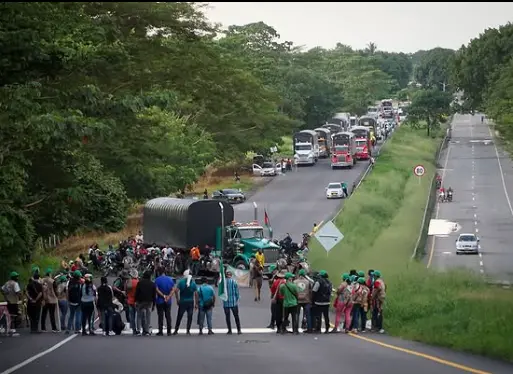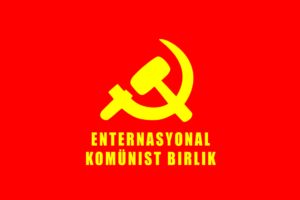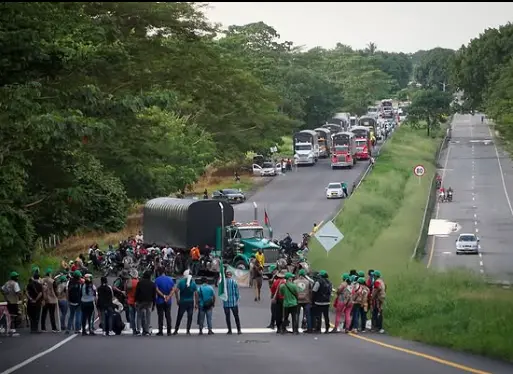
Report on the Class Struggle in the Colombian Countryside
We hereby share a summary of an article by Nueva Democracia from Colombia.
In 2025 several seizures of lands and peasant resistance took place in several areas. These actions are part of the constant struggle for land in Colombia, which with the deepening and persistence of the land problem, and the constant attacks of the State in an attempt to drown the struggle with blood to pacify the masses, have led the poorest and most determined peasant to struggle to conquer land.
The big cattle industry (big landlords), through the Colombian Federation of Ranchers (Fedegan) states that “the security crisis in the Colombian countryside keeps increasing, with daily invasion, ever more organized and difficult to contain”. They have made a call to conform the Cattle Industry Security Fronts, similar to the former cooperatives of private security (Convivir), which served to strength paramilitarism in the 90s.
We hereby share some examples of land seizures:
Cajibío
Since July 2021, around 150 peasants from the Agrarian National Coordination (CNA) entered the land of the Irish multinational paper company Smurfit with axes and machetes in an attempt to seize it. This multinational company monopolizes and operates over 3,000 hectares of land with pine monocultures, which destroys the peasant economy and the resources of the region. On July 10, a joint operation involving 700 people from the army, police, and company workers was deployed to evict the peasants. The peasants remained firm in their struggle for land, even after suffering threats, evictions, and even murders.
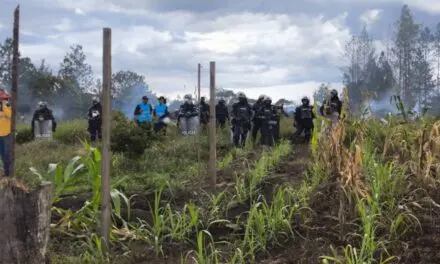
Rio de Oro
On October 13, a farm was seized by 50 peasants in Río de Oro. The farm is located next to another farm that was seized in 2024 by peasant families, who are still waiting for the formal handing over by the Special Activities Society (SAE). Immediately after the seizure, the owner deployed his private security team attempting to evict the peasants, which led to a confrontation. The peasants detained members of the private security team briefly. Finally, a Unified Command consisting of the police, army, government, and the Prosecutor’s Office was established, and the peasants withdrew.
Seizing lands when the Government fails to hand them over
We have previously reported on the problems of land in Colombia. One of the problems that Nueva Democracia has already denounced is the rampant bureaucratization, which has led to long periods without response when peasants try to request lands.
This is what happened in several land seizures. The peasants have occupied the farms as a method of pressure to demand the recognition of land property after months requesting bureaucratically and not receiving an answer.
In El Copey, 80 families who faced conflicts and displacement were repressed and evicted without any guarantees or solutions. In Tamalameque, 40 families occupied 120 hectares, and in La Plata, another 50 families did the same. In Sabana de Torres, 80 families were evicted by public forces. In Bolívar, three farms were occupied, and after being evicted by the Cattle Industry Security Fronts and the National Police, they seized one of the farms again. In Tolima, 120 families seized 700 hectares. One of the peasants from that seizure stated on the radio, “We seize the land because we need it, we are displaced people, and we need land to continue harvesting.”
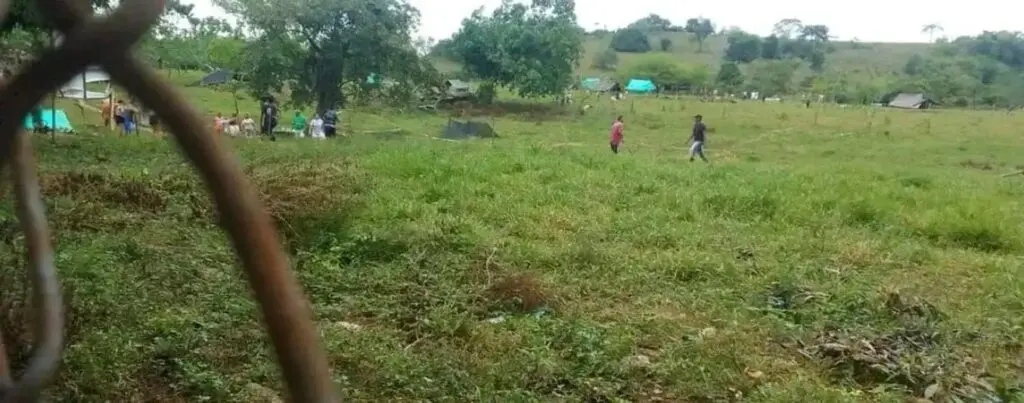

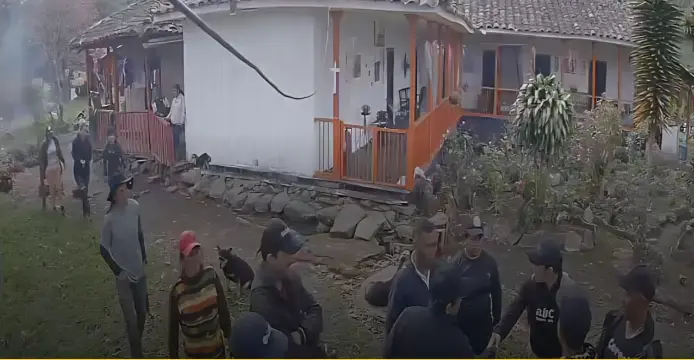
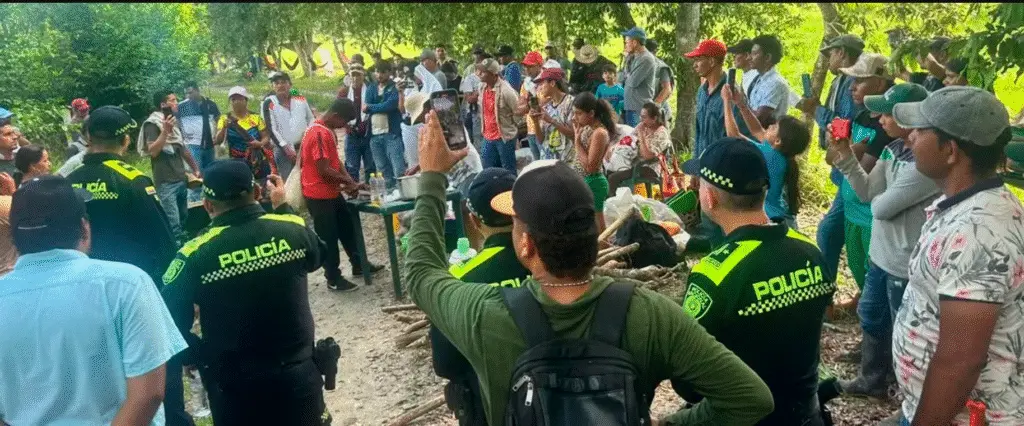
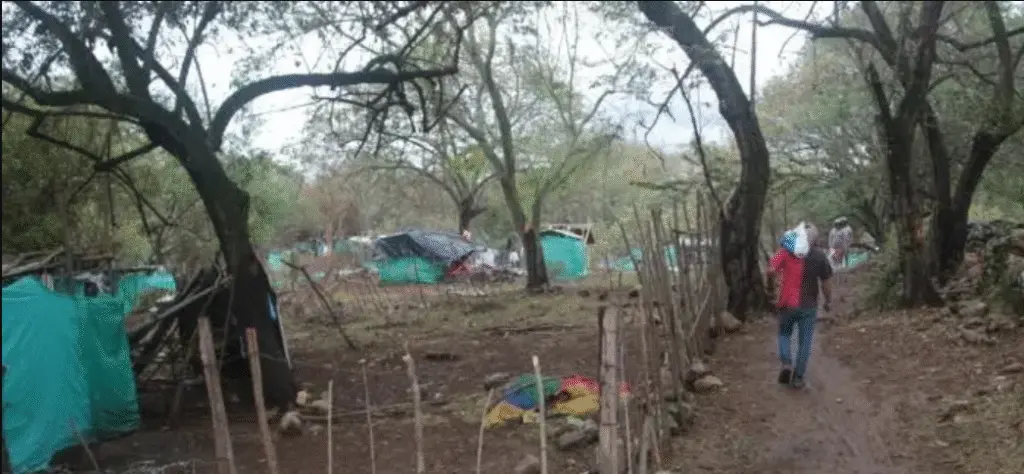
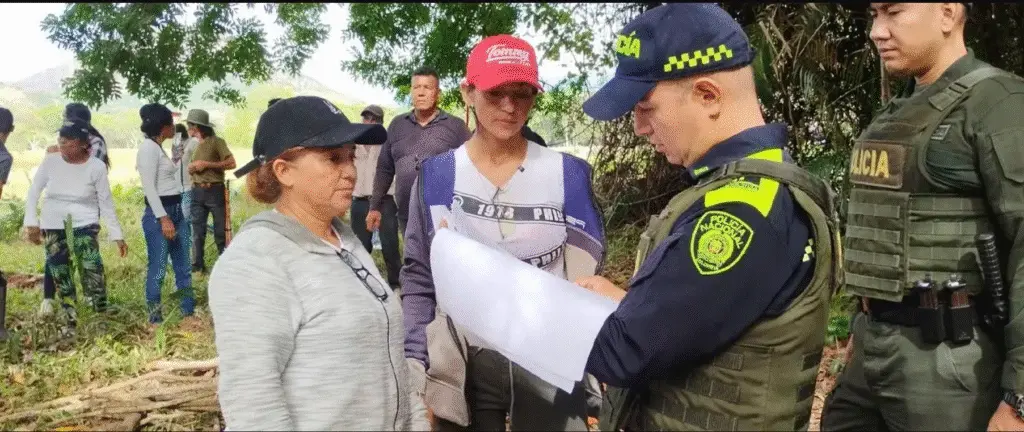
Increase in road blockades
There was not only an increase in land seizures, but also an increase in road blockades by 11% compared to last year. There are several reasons for this: Non-compliance by the government, insecurity in rural areas, requests for land and other basic rights, such as public services, healthcare, and transportation. In total, there were 700 road blockades, resulting in 455 days of stopped production.
